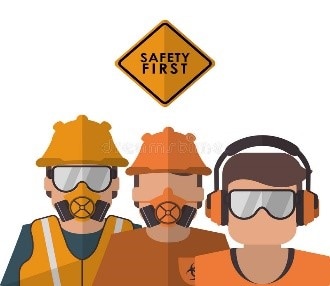CDC Environmental Health Nexus Newsletter
Healthy Environment, Healthy You
June 25, 2021 | Volume 3

Environmental News Nexus
Environmental Health Nexus (EH Nexus) shares environmental health messages with the public and gives special attention to environmental justice.
Each newsletter provides information about environmental health issues and offers information that promotes actions to help save lives and reduce harm from many threats, including climate change, contaminated food and water, toxic environments, and inadequate systems and practices.
This issue covers the following topics:
• Extreme Heat Health Trends
• CDC’s Heat & Health Tracker
• Extreme Heat Symptoms
• How Heat Affects Your Health
• Populations at Higher Risk from Extreme Heat
• Environmental Health Updates and Resources
If the newsletter was emailed to you, we thank you for joining our subscription distribution list. If you are not a subscriber, please click here, enter your email address, and click the subscribe button.
Extreme Heat: Keep Your Cool in Hot Weather
Hot weather can cause the body’s temperature to rise. If it cannot cool itself sufficiently by sweating, heat-related illness or even death can occur. Each year, extreme heat events cause deaths as a results of heat stroke and related conditions, cardiovascular disease, respiratory disease, and cerebrovascular disease. About 700 people in the United States are killed by extreme heat every year on average, though the actual number of deaths may be much higher.
Heat & Health Trends
Extreme summer heat is increasing in the United States, and climate projections indicate that extreme heat events will be more frequent and intense in coming decades. However, some heat-related illness and death risks have diminished in recent decades, possibly due to better forecasting, heat-health early warning systems, and increased access to air conditioning for the U.S. population. Yet, extreme heat events remain a cause of preventable death nationwide.
Heat & Health Tracker
Extreme heat events have long threatened public health in the United States. The CDC Heat & Health Tracker provides timely, local heat and health information so communities can better prepare for and respond to extreme heat events.
CDC has just released the newest version of the Heat & Health Tracker. You can now explore the heat wave forecast for your county and track weekly cases of heat-related illness across the country. Enter your location in the search feature to explore how extreme heat affects your county, populations that are at risk, and resources for response.
Check out the CDC Heat & Health Tracker today!
Did You Know in the United States
Changes to our climate mean our communities need to prepare for the health risks of higher temperatures.
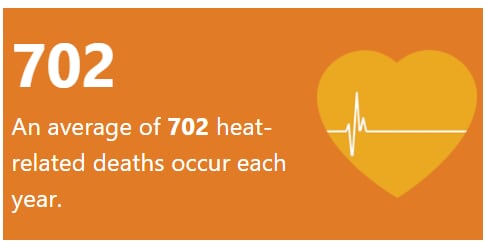
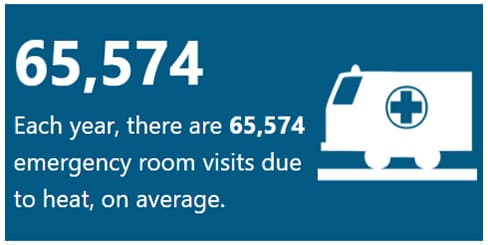

Too Much Exposure to Extreme Heat is Harmful
People who are exposed to extreme heat or work in hot environments may be at risk of heat stress. Exposure to extreme heat can result in occupational illnesses and injuries. Heat stress can result in heat stroke, heat exhaustion, heat cramps, or heat rashes. It is important to know what heat stress is, how it affects your health and safety, and how it can be prevented. Read on to learn more.
Prepare Now
To protect your health when temperatures are extremely high, remember to stay cool, hydrated, and informed.
The following tips are important:
Stay cool

- Wear Appropriate Clothing: Choose lightweight, light-colored, loose-fitting clothing.
- Stay Cool Indoors.
- Schedule Outdoor Activities Carefully.
- Pace Yourself.
- Wear Sunscreen.
- Do Not Leave Children in Cars.
- Avoid Hot and Heavy Meals.
Stay hydratedpdf icon

- Drink Plenty of Fluids.
- Warning: If your doctor limits the amount you drink or has you on water pills, ask how much you should drink while the weather is hot.
- Stay Away from Very Sugary or Alcoholic Drinks.
- Replace Salt and Minerals: A sports drink can replace the salt and minerals you lose in sweat.
- If you are on a low-salt diet, have diabetes, high blood pressure, or other chronic conditions, talk with your doctor before drinking a sports beverage or taking salt tablets.
- Keep Your Pets Hydrated.
Stay informed

- Check for Updates: Check your local news for extreme heat alerts and safety tips and to learn about any cooling shelters in your area.
- Know the Signs: Learn the signs and symptoms of heat-related illnesses and how to treat them.
- Use a Buddy System when working in the heat, monitor the condition of your co-workers, and have someone do the same for you.
- Monitor Those at High Risk.
Heat-Related Illnesses and Symptoms
Heat-related illnesses are preventable. Learn the symptoms and what to do if you or a loved one shows signs of having a heat-related illness.
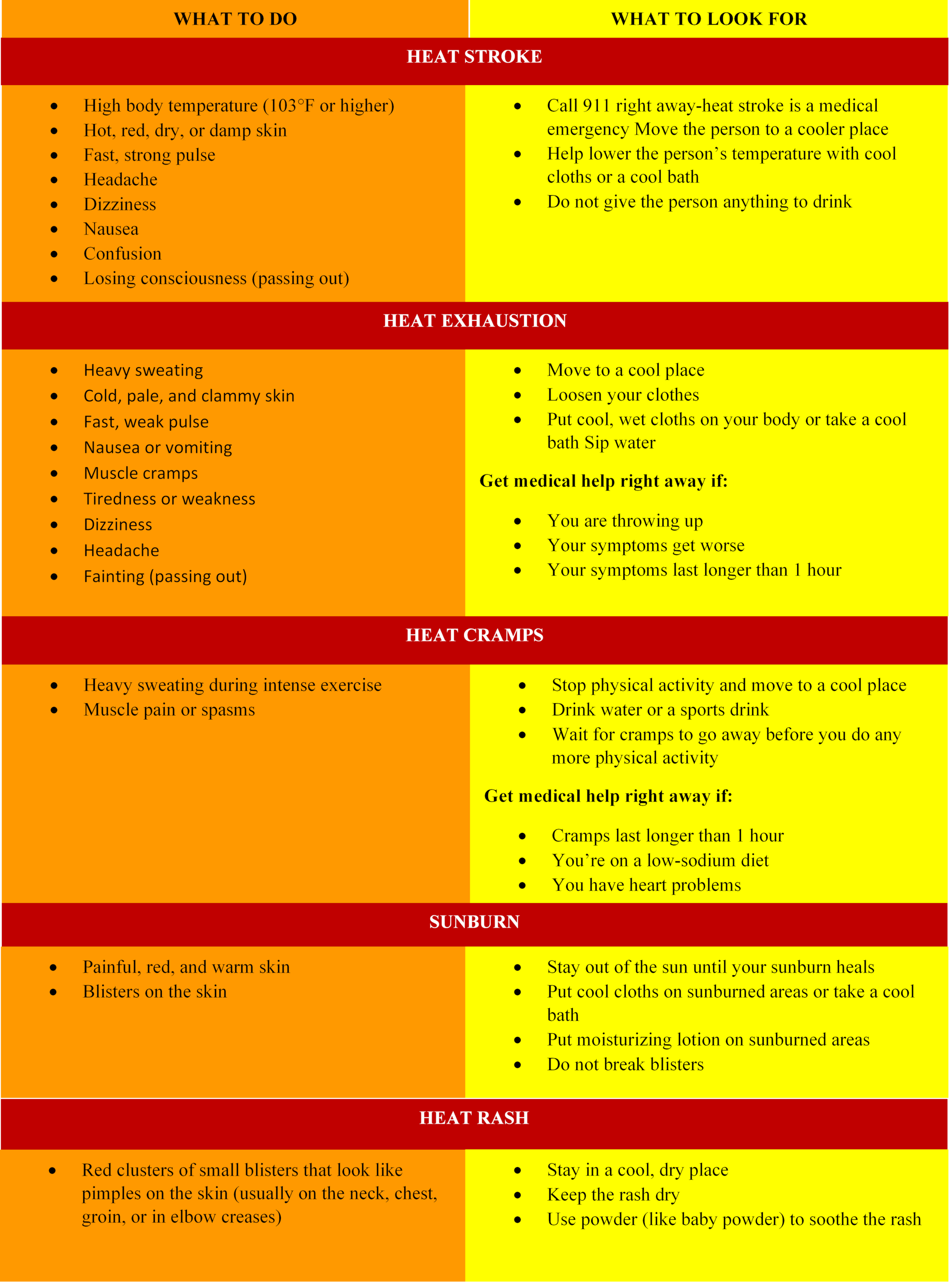
Protecting Groups Who Are at Increased Risk from Extreme Heat
Anyone can be at risk from the health effects of heat, but some are more vulnerable. Additionally, urban heat islands, combined with an aging population and increased urbanization, are projected to increase the vulnerability of people of low socio-economic status to heat-related health impacts in the future.

Do Not Leave Children in a Car Alone
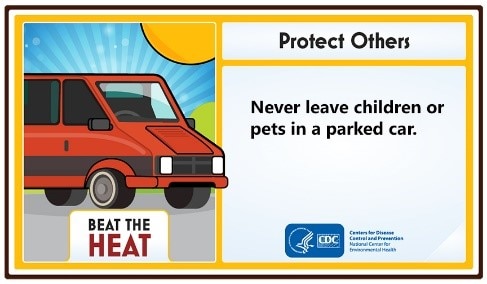
Even when it feels cool outside, cars can reach unsafe temperatures very quickly. Temperatures inside the car can rise almost 20 degrees Fahrenheit within the first 10 minutes, even with a window cracked open.
Leaving a window open is not enough. Children who are left unattended in parked cars are at greatest risk for heat stroke, and possibly death.
Additional Web and Multimedia Resources
• Temperature Extremes, Climate Change and Health | NCEH | CDC
• Hazards to Outdoor Workers | NIOSH | CDC
• OSHA-NIOSH Heat Safety Tool App | NIOSH | CDC
• Heat and Outdoor Workers | Natural Disasters and Severe Weather | CDC
• Infographic: Avoid Spot Treat: Heat Stroke & Heat Exhaustion | CDC
• Skin Exposures and Effects | NIOSH | CDC
• Beat the Heat Podcast
• Frequently Asked Questions (FAQ) About Extreme Heat | Natural Disasters and Severe Weather | CDC
- Check Out CDC’s Tracking Network to Access Data and Tools to Learn How Extreme Heat Affects Your Health.
CDC’s Environmental Public Health Tracking Network is a dynamic surveillance system that provides information and data about environmental hazards and the health problems that may be related to them. Learn more about where environmental hazards exist, where exposures happen, and how targeted action can protect health, reduce illness, and save lives. - Learn Important Steps to Take to Care for Asthma During an Emergency.
During and after an emergency, you may have questions about how to manage you or your child’s asthma. Learn more about how to care for asthma during an emergency. - Today’s the Day to Start Thinking about Air Quality.
National air quality has improved since the 1990s, but many challenges remain in protecting public health and the environment from air quality problems. Air pollution is associated with health problems that include asthma, increased emergency department visits and hospital stays for breathing and heart problems and increases in illnesses such as pneumonia and bronchitis. The Air Quality Indexexternal icon tells you how clean or polluted your outdoor air is, along with associated health effects that may be of concern. - Watch EH Nexus Webinar on Hurricane Preparedness.
The Environmental Health Nexus Webinar provides information about Hurricane Safety and Preparedness. Subject matter experts from CDC discussed strategies on how to keep you and your community safe during hurricane season. - Check out the EH Nexus Newsletter on Hurricane Preparedness.
The 2020 hurricane season was the most active on record. Hurricane season begins May 15 in the north Pacific, June 1 in the Atlantic and the Caribbean, and ends November 30. Read the EH Nexus Newsletter to learn actions you can take to protect yourself and your loved ones during this year’s hurricane season.
Thank you for reading. Do not keep this great resource to yourself! Please share it with your colleagues and networks.
If you are not yet a subscriber, please click here, enter your email address, and click the subscribe button at the bottom of the webpage.




